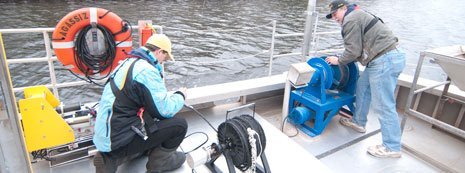Title
Predicting removal of trace organics by reverse osmosis for potable reuse
Document Type
Presentation
Publication Date
2017
Abstract
Potable reuse of municipal wastewater has become an area of intense interest for communities in arid and drought-stricken areas that are facing dwindling supplies of fresh water. Large communities such as San Diego are currently designing indirect or direct potable reuse systems, and some communities have already implemented systems. An area of critical concern for potable reuse is the removal of pharmaceuticals and personal care products (PPCPs), contaminants of emerging concern (CECs), industrial solvents, and other trace organics that may be in municipal wastewater, including those that are not currently regulated in drinking water. Reverse osmosis (RO) is a key process in the treatment train for a potable reuse system. Reverse osmosis is sometimes perceived as being an absolute barrier to all solutes in water, but the reality is that some low molecular weight, polar, neutral organic molecules are poorly removed. Reverse osmosis removal efficiency can be affected by many factors, including the physical-chemical properties of the solute, membrane properties, process operating conditions, and feed water characteristics. There is a need to develop a model that predicts the removal efficiency of a wide variety of compounds based on these variables, so that removal efficiency can be determined when new organics of concern are identified. This presentation will describe research being funded by the WateReuse Research Foundation that is developing a model to predict the removal of trace organics. The model is based on the intrinsic interaction between organic compounds and RO membranes, developed by calculating the aqueous-phase free energies of interaction between PA membrane and various organics using ab initio quantum mechanical calculations. The theoretically calculated aqueous-phase free energies of interaction (both water and organics) will be correlated to experimentally-measured mass transfer coefficients from bench tests (both water and organics) using a quantitative structure activity relationship (QSAR) model. Results from the QSAR model are then fed into a process model that takes membrane properties into account by back-calculating the water and sodium chloride mass transfer coefficients from information contained on manufacturer specification sheets, allowing the model to be used with any (existing or future) membrane product. The process model will also account from operating conditions such as feed pressure, water temperature, cross flow velocity, model dimensions, etc. The product of the research is an integrated model that will predict the permeate concentration of organic compounds (i.e., rejection of organics) at full-scale operation.
Publication Title
AEESP 2017
Recommended Citation
Howe, K.,
Minakata, D.,
Breitner, L.,
&
Zhang, M.
(2017).
Predicting removal of trace organics by reverse osmosis for potable reuse.
AEESP 2017.
Retrieved from: https://digitalcommons.mtu.edu/cee-fp/21


Publisher's Statement
Publisher's version of record: https://aeesp2017.com/program_list.php?sid=S38#a207